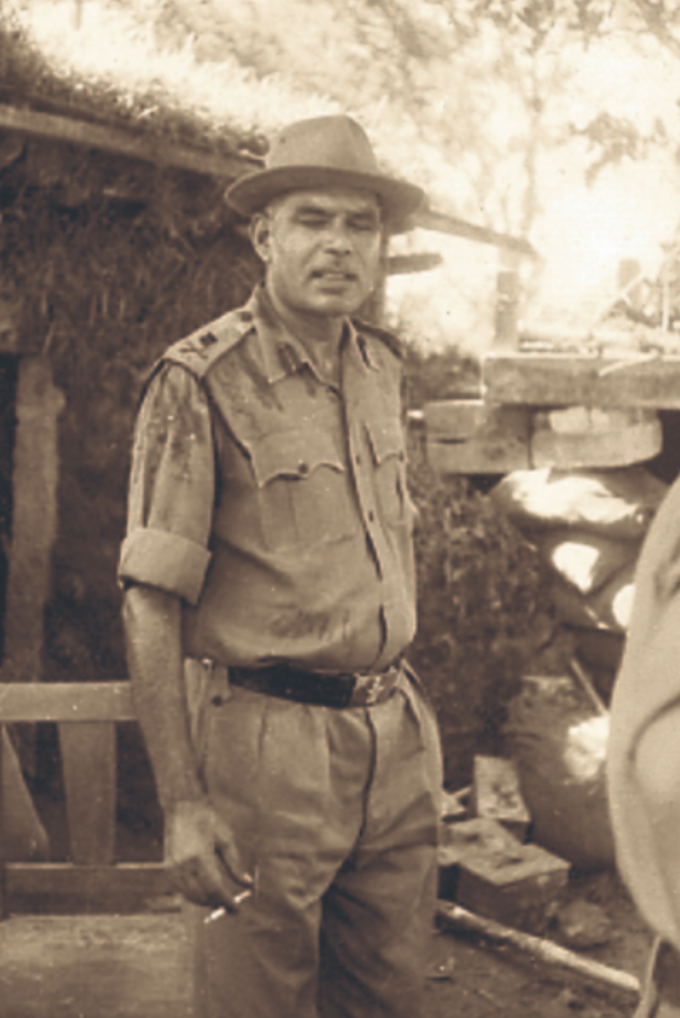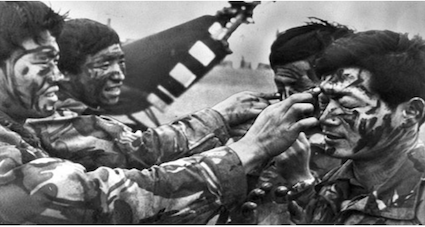(This is the seventh piece in a series on ’71 Indo-Pak War which is celebrating its 50th year this year. The first , second, third , fourth, fifth and sixth piece could be read by clicking on links).
A small error in reporting can have far reaching consequences, unintended and disproportionately beneficial to one, and harmful to another. That error, if it happens during a war, can sometimes even influence outcomes in a particular sector. As it happened in the 1971 war and the error in reporting was done by a BBC correspondent of the day, and its beneficiary was India. The Pakistanis had no way of knowing that the report was erroneous and the Indian field commanders had no reason to contradict or clarify. What happened was that the BBC correspondent reported erroneously that a brigade had been airdropped in a sector. Some Gorkha Rifles (GR) troops had indeed been dropped in a sector in East Pakistan where intense battle was being fought.
It was a battalion strength at best that had been inducted into the sector but the correspondent said that a brigade had reached the area. An innocuous looking mistake except that a battalion can be up to 1,000 men but a brigade can have over 3,000 men. Plus, attack by a brigade can often mean that other supporting elements may also be involved and that number too can be substantial. The induction of an attack brigade in a sector can be interpreted by the adversary as a very serious development. Here, it was the formidable fighters Gorkha troops that were being discussed in the news report and an impression got created that a brigade strength had arrived in an area well defended by the Pakistanis. But the word brigade, instead of battalion, demoralised the defendants!
(Some 750 Indian Gorkha soldiers made 7,326 Pakistani soldiers surrender in 1971 War.)
Detailed discussions about the case being referred to here can be left for the time being and air operations in 1971 war, both in the East and West Pakistan, are what we will focus on. Some comparisons in terms of numbers, of fighter aircraft involved on both sides, may help us understand things better. In the East Pakistan, the Pakistani Air Force barely had 16 fighter aircraft of different descriptions at the beginning of the war. In fact, by December 3 when the hostilities began officially with Pakistan launching Operation Chengiz Khan, the PAF had lost two fighter aircraft and the number had come down to 14.
On the eastern front, Indian Air Force (IAF), on the other hand, had 161 fighter aircraft of various types dispersed widely at different airfields. This number tells a story as PAF was outnumbered 01 to 10 here and even the available aircraft could not be operated as the IAF bombers rendered the runways unfit for use. Most PAF fighter aircraft remained standing on the airfield as repeated bombardments created large craters on the runways. For a week or more, till surrender by Pakistan on December 16, these fighter aircraft were mere decorative pieces adorning the airfields. On December 15, PAF personnel realised what was coming and they sabotaged these aircraft rendering them unfit for flying. Some of these abandoned fighter aircraft later became the core of nascent Bangladesh Air Force after repairs were carried out.
In all, India flew around 2,000 sorties in the East and the PAF could barely fly 30 sorties, posing no challenge to the IAF or the Indian army. In the West, Pakistan flew about 2,840 sorties as against 4,000 by the IAF. According to official records, at least 45 IAF aircraft were lost in the 1971 war as against 60 to 75 aircraft by PAF. This number does not include F-6s, Mirage IIIs, or the six Jordanian F-104s which failed to return to their donors. The imbalance in aircraft losses by IAF are perhaps explained by its higher sortie rate and participation on ground-attack missions.
In the West, Pakistani Murid airbase was attacked on December 8 and Hunter aircraft from Pathankot participated in the attack. That day, they destroyed five F-86 fighter aircraft of PAF on the ground and it was one of the most successful IAF attacks on PAF assets in the 1971 war.
In the East, Operation Cactus Lily took place on December 9 and led to the successful capture of Dhaka over the next few days. This is also known as Meghna Heli Bridge operation and IAF airlifted troops of IV Corps led by extraordinary military commander Lt Gen Sagat Singh. He had conceptualised this airlift after retreating Pakistani defenders destroyed a bridge over Meghna river and bypassed Pakistani defences while racing to capture Dhaka later. Dhaka was not officially the objective of the Indian forces but Lt Gen Sagat Singh made it happen unexpectedly. II Corps was also one force assigned to move from one direction towards Dhaka but it never made it to that destination.
During this operation, the IAF operated over 110 sorties, and most of them carried 23 soldiers, as against 14 which was the usual recommended number for Mi-4 helicopters. This transport war horse contributed significantly to the capture of Dhaka by lifting troops across Meghna. It can thus be difficult to say that the fighter aircraft have a bigger or better role, than the transport fleet. We can safely say that in the induction of troops in a battlefield the transport helicopters can play an extraordinary role, not any less important than the fighter aircraft.
A decade earlier, Sagat Singh had participated in the Goa Liberation War and successfully led troops under his command to perform extraordinarily well. Two different columns were to move towards Panjim, then held by Portugese, and Sagat was given the command of one column. There is an interesting story about how he had a bet with Brigadier D K Palit regarding reaching Panjim first. He said that he would reach Panjim before the other column (being considered the main column as it was better organised) could make it. In that case, Brig Palit could have to buy him a drink at Mandovi bar! Sagat’s troops did make it to Panjim before the other column and he celebrated as per the bet!

Sagat Singh was an extraordinary military tactician and has the rare honour of commanding a para brigade also, something that was unheard of. A normal infantry officer being put in charge of a para brigade but he did his jumps as per the demands of that assignment successfully and led 50 para brigade. He was called one of the most visionary warriors the Indian Army had in its ranks. Incidentally, he hailed from Churu in Rajasthan, known even today for having produced excellent soldiers. It is said that almost every household in the area has either a soldier or an ex soldier, something that holds true for the small village of Gurha Salathia near Vijaypur in Samba district too.
Sant Kumar Sharma, a seasoned journalist, is an authority on Jammu and Kashmir. Two of his books on Article 370 and Delimitation are already out. The third one on Indus Waters Treaty is now out and could be bought here.
Sant began as a teacher but after six years, joined the Indian Express, Chandigarh in 1990, the year when terrorism was taking its first step in J & K and soon there would be exodus of lakhs of Kashmiri Pandits from the Valley. He subsequently worked for The Statesman, The Times of India and Star News among others. He is based in Jammu since May 2000.
He edits epaper.earthnews.in, a newspaper from Jammu presently.


